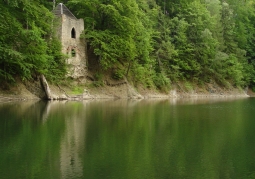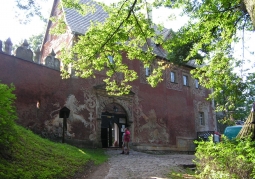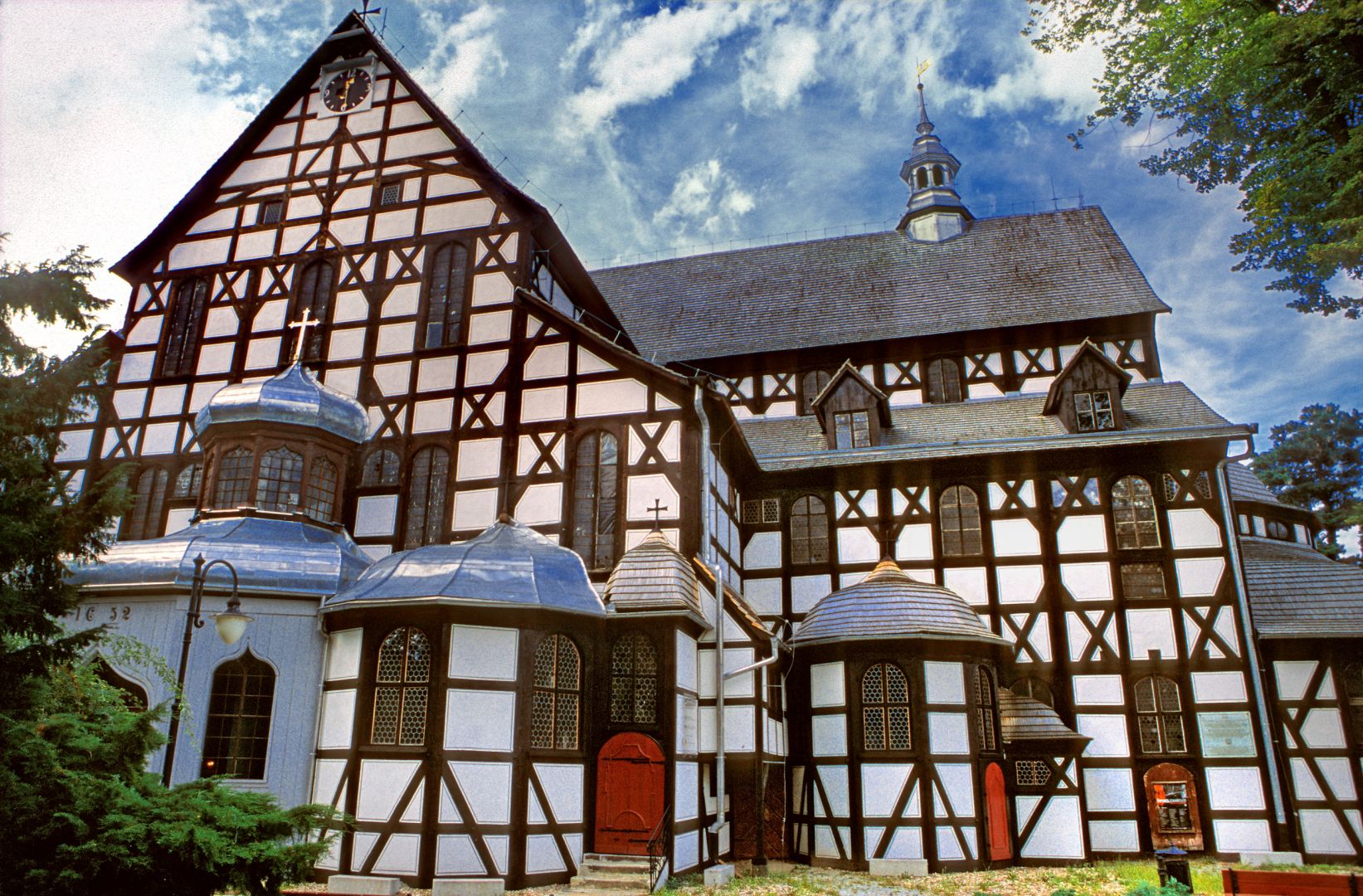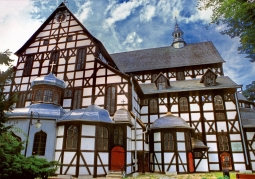Church of Peace Of the Holy Trinity - Świdnica
No weather data
0.0 /5
Number of ratings: 0
A historic religious building built under the agreements of the Westphalian Treaty concluded in 1648 and ending the Thirty Years' War. It belongs to the Świdnik parish of the Evangelical Church of Augsburg in Poland. The Świdnik Church of Peace was one of the three Churches of Peace after the facilities in Głogów and Jawor, for which Emperor Ferdinand III authorized the construction, in the hereditary principalities of the Habsburgs in Silesia. In these principalities, all churches built by Catholics and taken over by Protestants returned to the Catholic Church. In the principalities ruled by the Silesian Piasts, mostly Evangelicals, all churches could remain Protestant. The Church of Peace was built by Silesian evangelicals - thanks to the intercession of the Swedish monarchy, the Catholic emperor (Roman and King of Germany) Ferdinand, for the sake of peace, allowed his Catholic country to build three Protestant temples in Silesia. It was supposed to be a gesture of tolerance, but difficulties for evangelicals were established. It is a symbol of Polish-German reconciliation - not only because of the name, but also for a joint visit to the Świdnik church in 1989 by the Polish Prime Minister Tadeusz Mazowiecki and German Chancellor Helmut Kohl, when both politicians prayed for peace and reconciliation. In 2001, the Church of Peace in Świdnica was inscribed on the UNESCO World Heritage List.
Komentarze
No results
Nearby places

Daisy Lake Nature Reserve - Ksiaz Landscape Park
Category: Nature reservesGeological and forest reserve of inanimate nature. It was created in 1998. The Green Tourist Attraction is the Lake Green commonly called Lake Daisy. It is a flooded limestone excavation. These rocks are of interest to...
10 km

Water dam - Bystrzyckie Lake
Category: Lakes, springs, waterfallsThe water dam built in 1911-1914 on the Bystrzyckie Lake is a technical monument. The dam is 44 m high and 230 m long. The resulting reservoir collects up to 8 million m³ of water. The lake is approx. 3.3 km long with...
11 km

Bystrzyckie Lake
Category: Lakes, springs, waterfallsThe dam reservoir picturesquely situated in the valley of the Bystrzyca gorge, created at the beginning of the 20th century after the construction of the 44 m high dam on the Bystrzyca Kamienna River. The reservoir is...
12 km

Grodno Castle - Zagórze Śląskie
Category: LocksThe castle was once a nest of robbers knights, it was probably built by Bolek I. At its feet there is the picturesque, winding Lake Bystrzyckie. It is located in the southern part of the Wałbrzyskie Mountains on the...
13 km
Nearby places

Daisy Lake Nature Reserve - Ksiaz Landscape Park
Category: Nature reservesGeological and forest reserve of inanimate nature. It was created in 1998. The Green Tourist Attraction is the Lake Green commonly called Lake Daisy. It is a flooded limestone excavation. These rocks are of interest to...
10 km

Water dam - Bystrzyckie Lake
Category: Lakes, springs, waterfallsThe water dam built in 1911-1914 on the Bystrzyckie Lake is a technical monument. The dam is 44 m high and 230 m long. The resulting reservoir collects up to 8 million m³ of water. The lake is approx. 3.3 km long with...
11 km

Bystrzyckie Lake
Category: Lakes, springs, waterfallsThe dam reservoir picturesquely situated in the valley of the Bystrzyca gorge, created at the beginning of the 20th century after the construction of the 44 m high dam on the Bystrzyca Kamienna River. The reservoir is...
12 km

Grodno Castle - Zagórze Śląskie
Category: LocksThe castle was once a nest of robbers knights, it was probably built by Bolek I. At its feet there is the picturesque, winding Lake Bystrzyckie. It is located in the southern part of the Wałbrzyskie Mountains on the...
13 km

